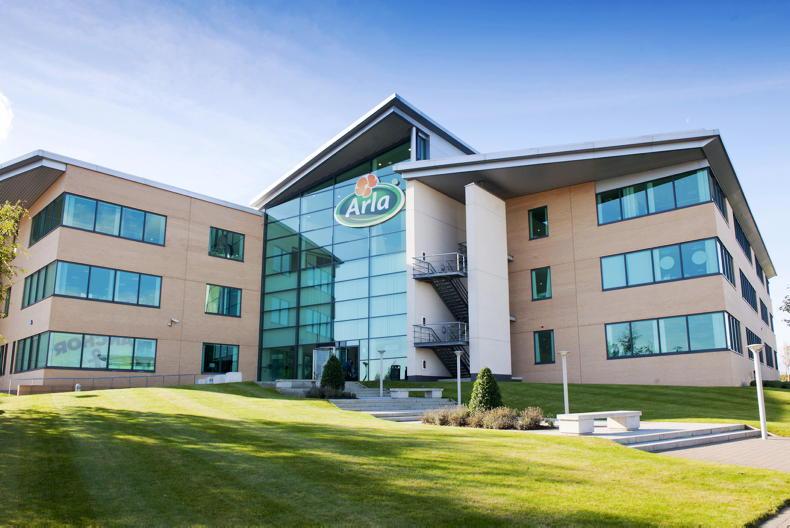European media reports suggest that the boards of FrieslandCampina and Arla are exploring a possible merger. Individually, both are very significant global dairy businesses, each processing around 10bn litres, as much milk as is produced on the whole island of Ireland. If merged, the new company would be the biggest dairy processor in the world, processing in excess of 23bn litres of milk annually with a combined turnover of almost €23bn.
When contacted by the Irish Farmers Journal this week, both entities said it is company policy not to respond to rumours or speculation.
Reports suggest FrieslandCampina chairman Sybren Attema has been in talks with Arla colleague Jan Toft Nørgaard for several weeks.
There have been rumours of this potential merger previously, but for one reason or another it didn’t happen. So what is different now?
If merged, the new company would be the biggest dairy processor in the world, processing in excess of 23bn litres of milk annually
The world has changed in terms of how both these businesses operate. Now, exports are much more of an issue for these companies. This means investment overseas in marketing and new businesses.
For many years, both FrieslandCampina and Arla would have had a mostly local market driven on fresh milk sales rather than commodity exports. Secondly, both companies are now reaching maximum output from their current member base.
For years, Scandinavian output has been in decline as costs of production increase. This has forced Arla into other countries such as Germany and the UK. In the Netherlands, environmental concerns have occupied the minds of farmers for over 20 years. This year, the Dutch government has imposed new production and environmental limits, with a plan to compensate farmers that exit production.
For many years, both FrieslandCampina and Arla would have had a mostly local market driven on fresh milk sales rather than commodity exports
Remember, both entities trade as a co-operative, unlike over 50% of the European processors that operate as private companies. In some respects, this brings its own challenges, balancing member returns and financing investment in the future.
Of course, if the merger were to proceed, it would bring synergies, market power and a real powerhouse on export markets.
The Scandinavian company has the upper hand on the Dutch company at the moment, with better growth potential, better returns and a more stable supply base. FreislandCampina has been losing supply and is campaigning for new members, but its success has been limited.
There is competition in the Netherlands from a number of other smaller dairy processors that are performing well in more niche, streamlined businesses.
Reported results
Both Arla and FrieslandCampina recently reported first half results. Total Arla group revenue was €6.38bn for the first half of 2022, up 17% compared to €5.44bn in first half of 2021.
Profit share was 3% in line with the co-operative’s new retainment policy. Arla has also just paid out a 1c/l milk price top-up on supply in the first half of 2022.
FrieslandCampina also saw revenue increase from €5.5bn to €6.6bn and operating profit increased from €130m to €328m.
Scale comparison
French company Lactalis is currently the number one global dairy company, but an Arla/FreislandCampina merger would push them into the top spot.
So, where would this merger leave Irish dairy processors? In terms of scale, it would leave some of the Irish processors on a much smaller scale.
On the island of Ireland, Tirlán (Glanbia), Lakeland, Dairygold and Kerry are four of our biggest processors and this year in total they will process over 7bn litres of milk. That means the big four together would process about a third of what the new merger would.
At the next scale level, there are a host of other very significant processors such as Dale Farm, Arrabawn, Aurivo, Carbery and North Cork.
Two proud dairy companies, already at significant scale, would be better together than competing against each other
On an international scale, the new merger would sit up alongside the likes of Fonterra and Lactalis in scale. Will it happen? There are definitely more reasons why both companies would consider a merger now rather than when it was previously discussed. Back then, both companies were evolving and investing in their home countries.
Now the game has changed. Supply in both countries is downward and opportunities for growth are in East Asian countries. Two proud dairy companies, already at significant scale, would be better together than competing against each other.






 This is a subscriber-only article
This is a subscriber-only article









SHARING OPTIONS: